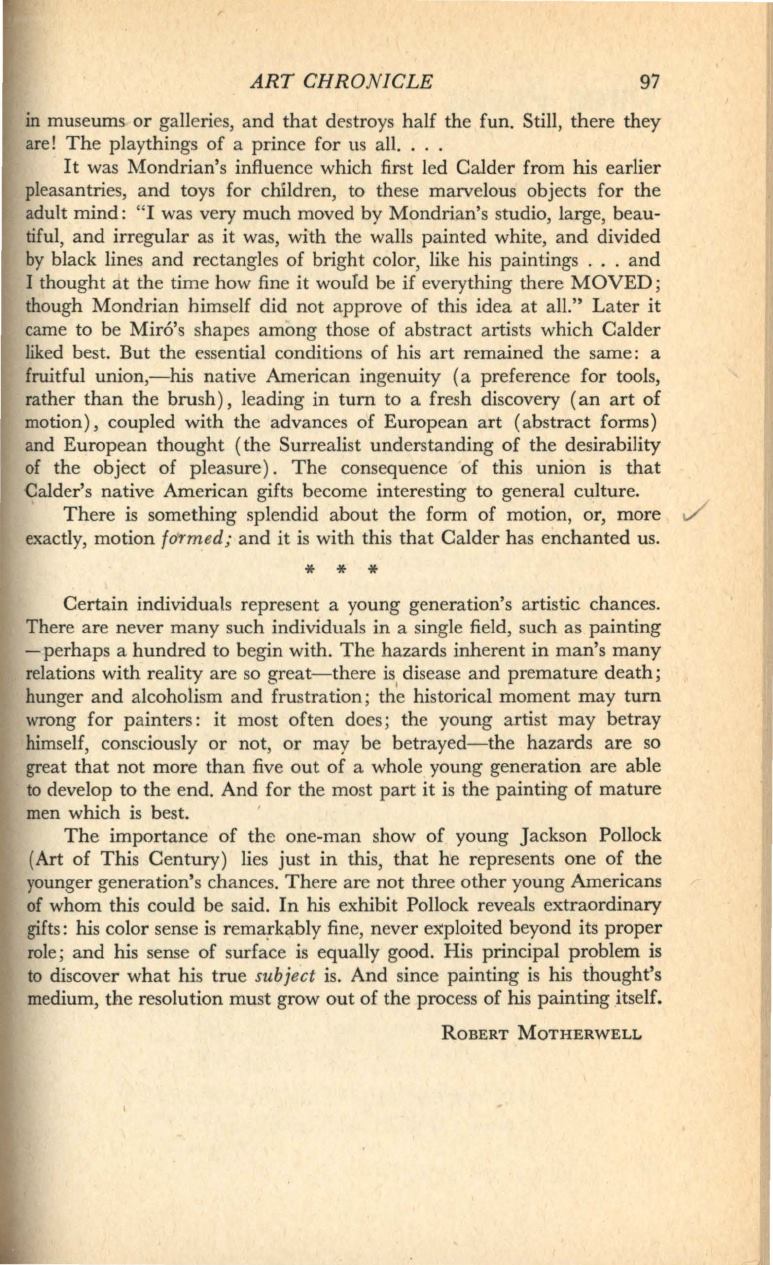
ART CHRONICLE
97
in
museums or galleries, and that destroys half the fun. Still, there they
are! The playthings of a prince for us all. ...
It was Mondrian's influence which first led Calder from his earlier
pleasantries, and toys for children, to these marvelous objects for the
adult mind: "I was very much moved by Mondrian's studio, large, beau–
tiful, and irregular as it was, with the walls painted white, and divided
by black lines and rectangles of bright color, like his paintings ... and
I thought at the time how fine it woufd be if everything there MOVED;
though Mondrian himself did not approve of this idea at all." Later it
came to be Mir6's shapes among those of abstract artists which Calder
liked best. But the essential conditions of his art remained the same: a
fruitful union,-his native American ingenuity (a preference for tools,
rather than the brush) , leading in turn to a fresh discovery (an art of
motion), coupled with the advances of European art (abstract forms)
and European thought (the Surrealist understanding of the desirability
of the object of pleasure). The consequence of this union is that
Calder's native American gifts become interesting to general culture.
There is something splendid about the form of motion, or, more ./
exactly, motion
formed;
and it is with this that Calder has enchanted us.
* * *
Certain individuals represent a young generation's artistic chances.
There are never many such individuals in a single field, such as painting
-perhaps a hundred to begin with. The hazards inherent in man's many
relations with reality are so great-there is, disease and premature death;
hunger and alcoholism and frustration; the historical moment may turn
wrong for painters: it most often does; the young artist may betray
himself, consciously or not, or may be betrayed-the hazards are so
great that not more than five out of a whole young generation are able
to develop to the end. And for the most part it is the painting of mature
men which is best.
'
The importance of the one-man show of young Jackson Pollock
(Art of This Century) lies just in this, that he represents one of the
younger generation's chances. There are not three other young Americans
of whom this could be said. In his exhibit Pollock reveals extraordinary
gifts: his color sense is rema.rkably fine, never exploited beyond its proper
role; and his sense of surface is equally good. His principal problem is
to discover what his true
subject
is. And since painting is his thought's
medium, the resolution must grow out of the process of his painting itself.
RoBERT MoTHERWELL


